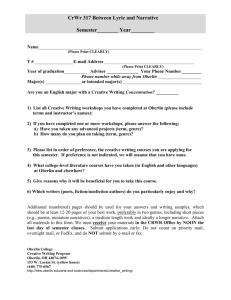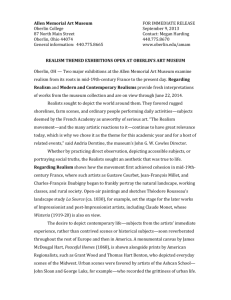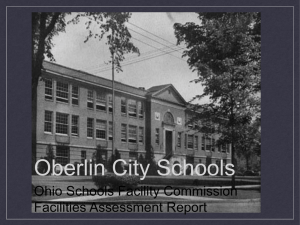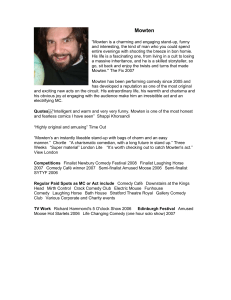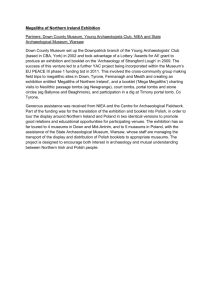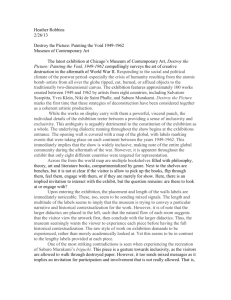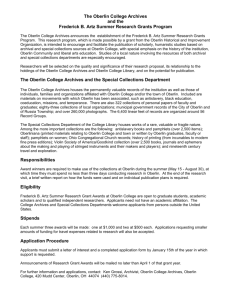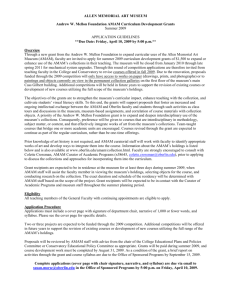"Human Comedy" of 19th-Century France
advertisement
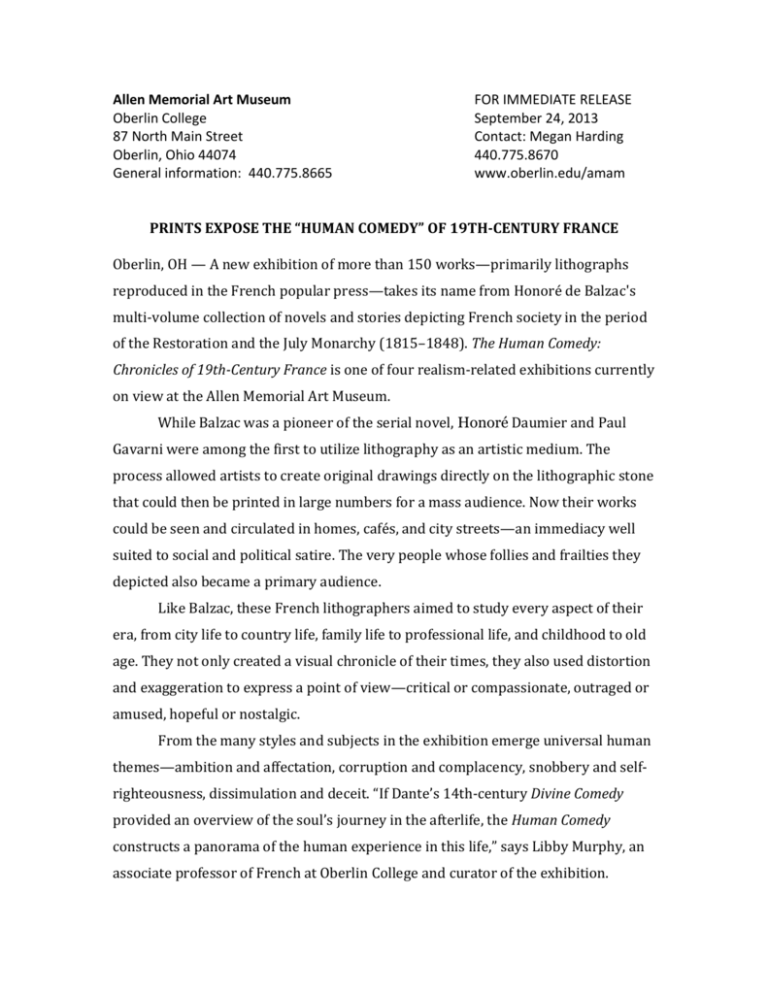
Allen Memorial Art Museum Oberlin College 87 North Main Street Oberlin, Ohio 44074 General information: 440.775.8665 FOR IMMEDIATE RELEASE September 24, 2013 Contact: Megan Harding 440.775.8670 www.oberlin.edu/amam PRINTS EXPOSE THE “HUMAN COMEDY” OF 19TH-CENTURY FRANCE Oberlin, OH — A new exhibition of more than 150 works—primarily lithographs reproduced in the French popular press—takes its name from Honoré de Balzac's multi-volume collection of novels and stories depicting French society in the period of the Restoration and the July Monarchy (1815–1848). The Human Comedy: Chronicles of 19th-Century France is one of four realism-related exhibitions currently on view at the Allen Memorial Art Museum. While Balzac was a pioneer of the serial novel, Honoré Daumier and Paul Gavarni were among the first to utilize lithography as an artistic medium. The process allowed artists to create original drawings directly on the lithographic stone that could then be printed in large numbers for a mass audience. Now their works could be seen and circulated in homes, cafés, and city streets—an immediacy well suited to social and political satire. The very people whose follies and frailties they depicted also became a primary audience. Like Balzac, these French lithographers aimed to study every aspect of their era, from city life to country life, family life to professional life, and childhood to old age. They not only created a visual chronicle of their times, they also used distortion and exaggeration to express a point of view—critical or compassionate, outraged or amused, hopeful or nostalgic. From the many styles and subjects in the exhibition emerge universal human themes—ambition and affectation, corruption and complacency, snobbery and selfrighteousness, dissimulation and deceit. “If Dante’s 14th-century Divine Comedy provided an overview of the soul’s journey in the afterlife, the Human Comedy constructs a panorama of the human experience in this life,” says Libby Murphy, an associate professor of French at Oberlin College and curator of the exhibition. Murphy is teaching a course this fall that uses The Human Comedy as a primary resource for her students. Her class, titled “La Comédie humaine: Social Identities in 19th-Century France,” will visit the AMAM and write about works in the exhibition. In addition, Murphy will conduct collaborative sessions with another class, “Prostitution and Social Control: Governing Loose Women,” taught by Assistant Professor of Sociology Greggor Mattson. Murphy and Mattson will give a free lecture at 5:30 p.m. on October 3 as part of the museum’s First Thursday series. Galleries will remain open until 8 p.m. The Human Comedy is on view in the Ripin Gallery through December 22, 2013. For complete event listings visit www.oberlin.edu/amam. RELATED EVENT Thursday, October 3, 5:30 p.m. “Proper Women, Necessary Women” Libby Murphy, associate professor of French, and Greggor Mattson, assistant professor of sociology, give a talk on the gender and sexuality roles evident in the exhibition The Human Comedy: Chronicles of 19th-Century France. On view through December 22, this selection of French satirical prints shows female dandies, laundresses, housewives, and courtesans that populated the 19th-century imagination. ### The Allen Memorial Art Museum cares for more than 14,000 works that provide a comprehensive overview of the history of art. We work with Oberlin College faculty and students to promote direct study of original works of art, foster visual literacy, and deepen appreciation for the diversity of world culture. Founded in 1917 with the idea that learning about art is important for everyone, the museum offers free admission. HOURS: Tuesday through Saturday, 10 a.m. to 5 p.m.; Sunday 1 to 5 p.m.; closed Mondays and major holidays. Free educational or group guided tours may be arranged by calling 440.775.8671.

